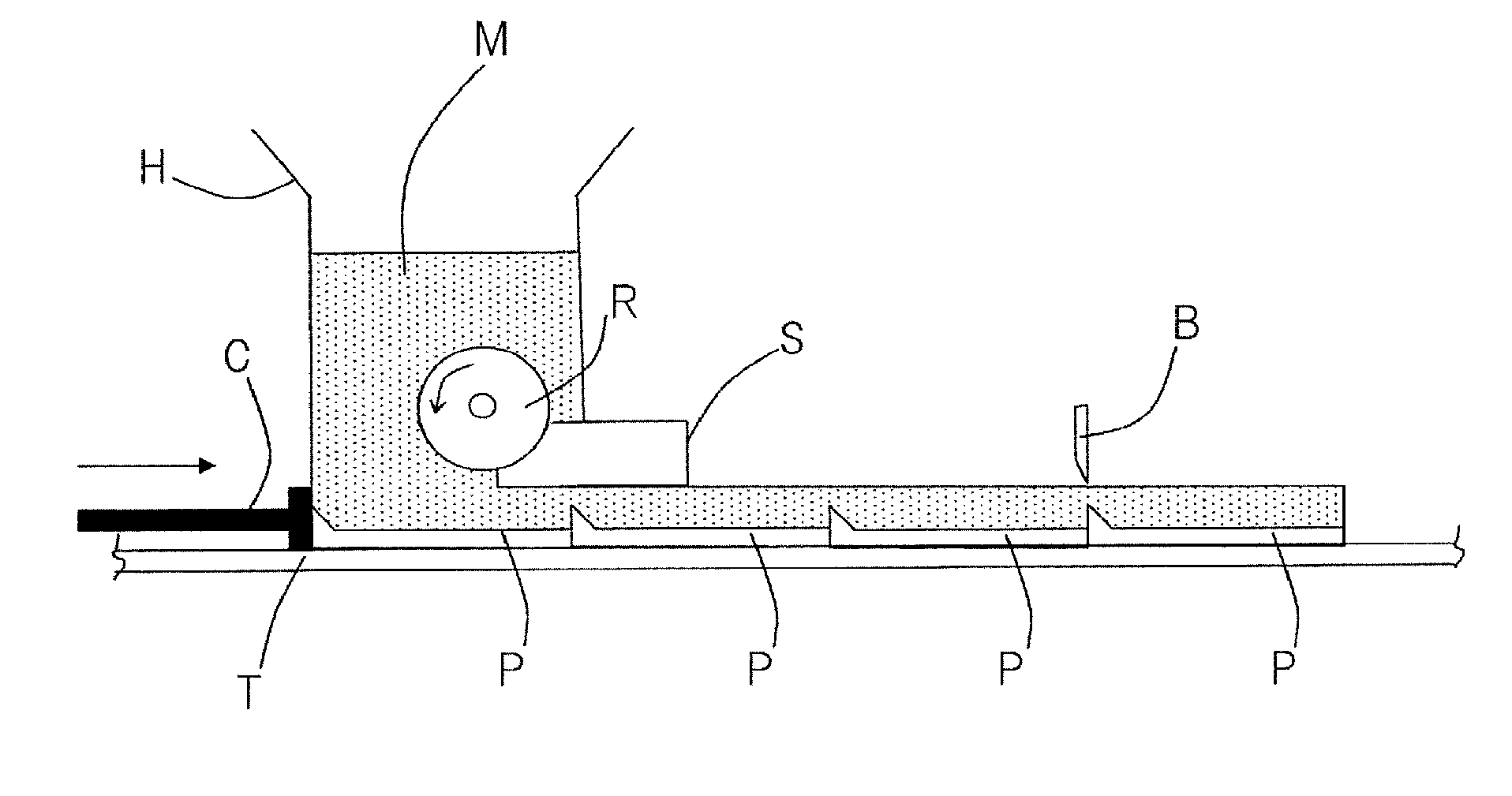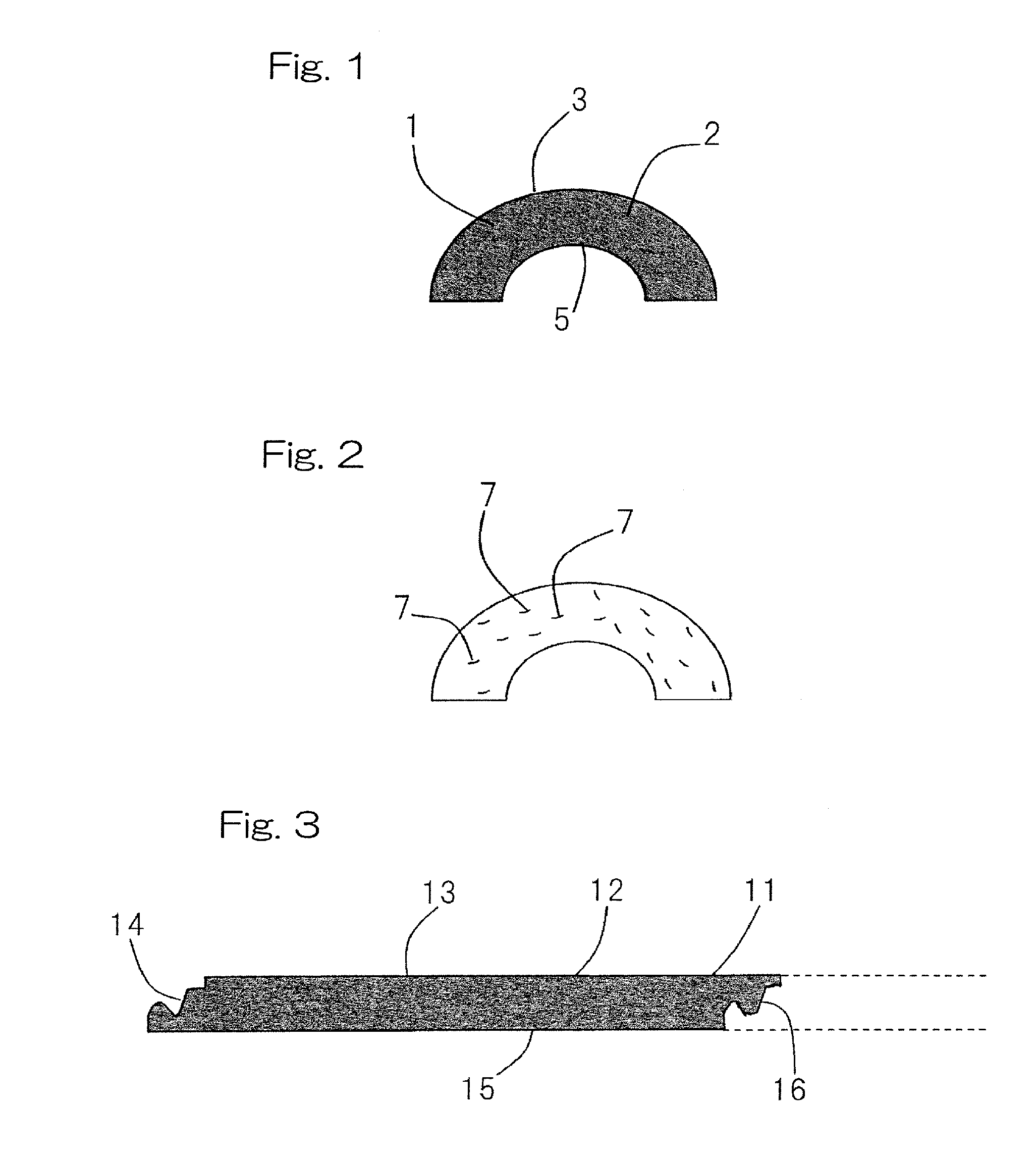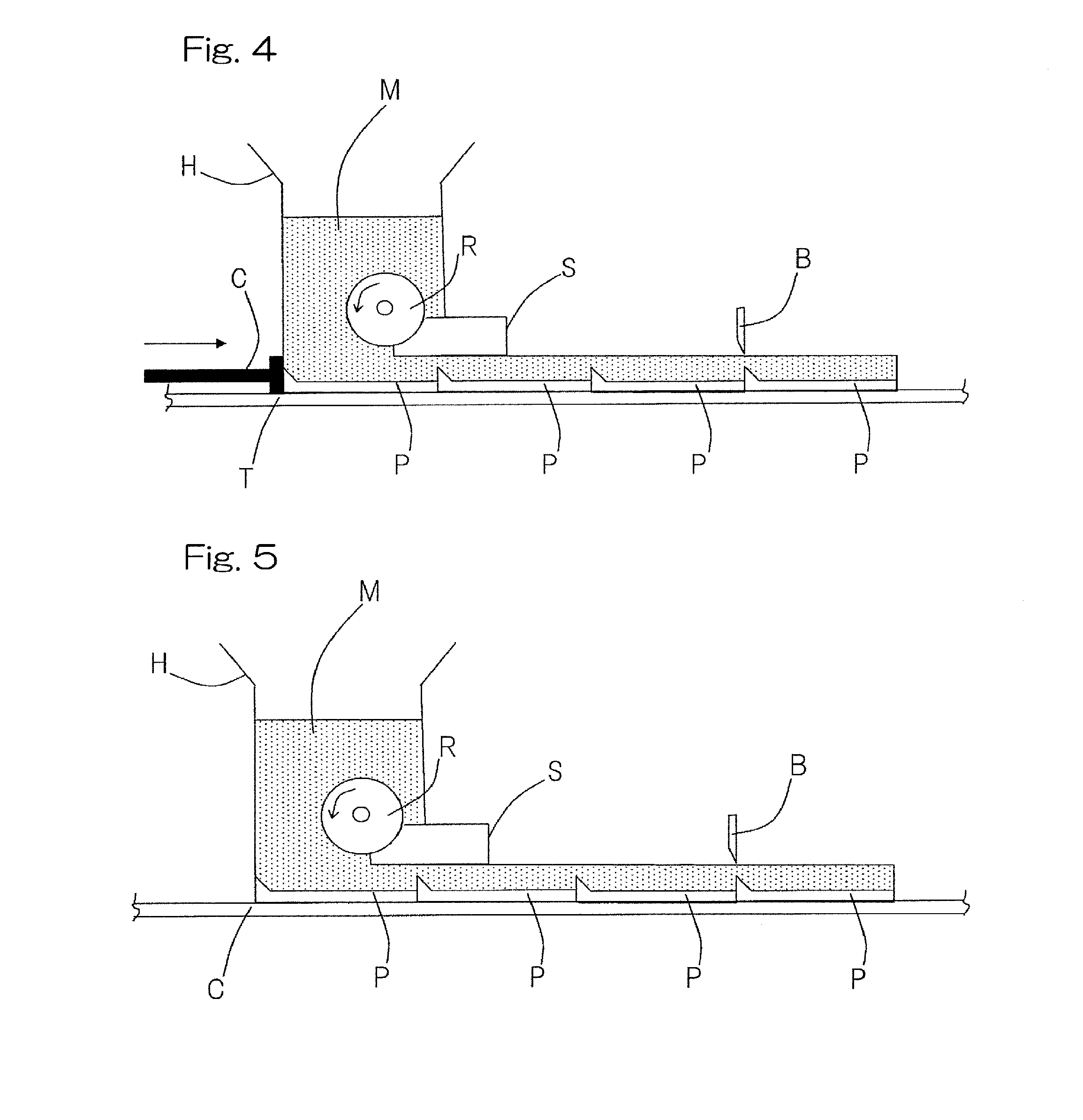Concrete tile and molding material for same
a technology of concrete tile and molding material, which is applied in the field of concrete tile, can solve the problems of reducing the total thickness, not being strong enough, and not meeting the light weight requirement of concrete tile, and achieves the effects of light weight, high strength and light concrete tile weigh
- Summary
- Abstract
- Description
- Claims
- Application Information
AI Technical Summary
Benefits of technology
Problems solved by technology
Method used
Image
Examples
examples
[0127]Hereafter, the present invention will be described in detail with reference to a Synthesis Example, Examples, and Comparative Examples. However, the present invention is not limited to these Examples.
[0128][Method for Measuring Fiber Strength (eN / dtex)]
[0129]Evaluation was performed in accordance with JIS L1015 “Test methods for man-made staple fibres (8.5.1)”.
[0130][Method for Measuring Tile Weight (Kg / m2)]
[0131]With respect to 5 tiles, the weight and the projected area from the upper face of each tile were measured. Then, sum of the areas of the respective tiles and the sum of the weight of respective tiles were calculated, and then, the obtained total weight is divided by the obtained total area, to calculate the tile weight (kg / m2).
[0132][Evaluation of Appearance of Tile Body]
[0133]Presence / Absence of Protrusion Caused by Fiber-Containing Granular Body in Surface Part of Tile
[0134]With respect to the upper face of the tile body, the presence / absence of a protrusion caused ...
examples 1 to 3
[0150]An ordinary portland cement (33.3 parts by mass), sea sand (63.2 parts by mass) as a fine aggregate S1, mica (weight average flake diameter: 300 μm, 2.5 parts by mass) as a functional aggregate S2 were mixed, and dry-blended for 1 minute using a 100-L volume planetary mixer. Then, water was added to the mixture, and the resultant mixture was kneaded for 1 minute, whereby a cement mixture having water cement ratio (W / C) of 38% by mass and aggregate (S) / cement (C) ratio=2 / 1 was obtained. After that, each kind of the fibers shown in Table 1 was added at the corresponding proportion shown in Table 1, and the resultant mixture was kneaded for 2 minutes, whereby a concrete tile molding material was obtained. Each of the fibers has been disentangled preliminarily by passing between rotating gears provided opposed to each other.
[0151]The molding material was loaded to the hopper of the roller / slipper-type extruder, and the material was extruded onto metal pallets for plain tile. Then,...
example 4
[0152]Concrete tiles were obtained in the same manner as in Example 1 except that the added amount of the fiber was 0.5 wt %. The characteristics of the obtained tiles are shown in Table 1.
PUM
| Property | Measurement | Unit |
|---|---|---|
| flexural strength | aaaaa | aaaaa |
| specific gravity | aaaaa | aaaaa |
| diameter | aaaaa | aaaaa |
Abstract
Description
Claims
Application Information
 Login to View More
Login to View More - R&D
- Intellectual Property
- Life Sciences
- Materials
- Tech Scout
- Unparalleled Data Quality
- Higher Quality Content
- 60% Fewer Hallucinations
Browse by: Latest US Patents, China's latest patents, Technical Efficacy Thesaurus, Application Domain, Technology Topic, Popular Technical Reports.
© 2025 PatSnap. All rights reserved.Legal|Privacy policy|Modern Slavery Act Transparency Statement|Sitemap|About US| Contact US: help@patsnap.com



